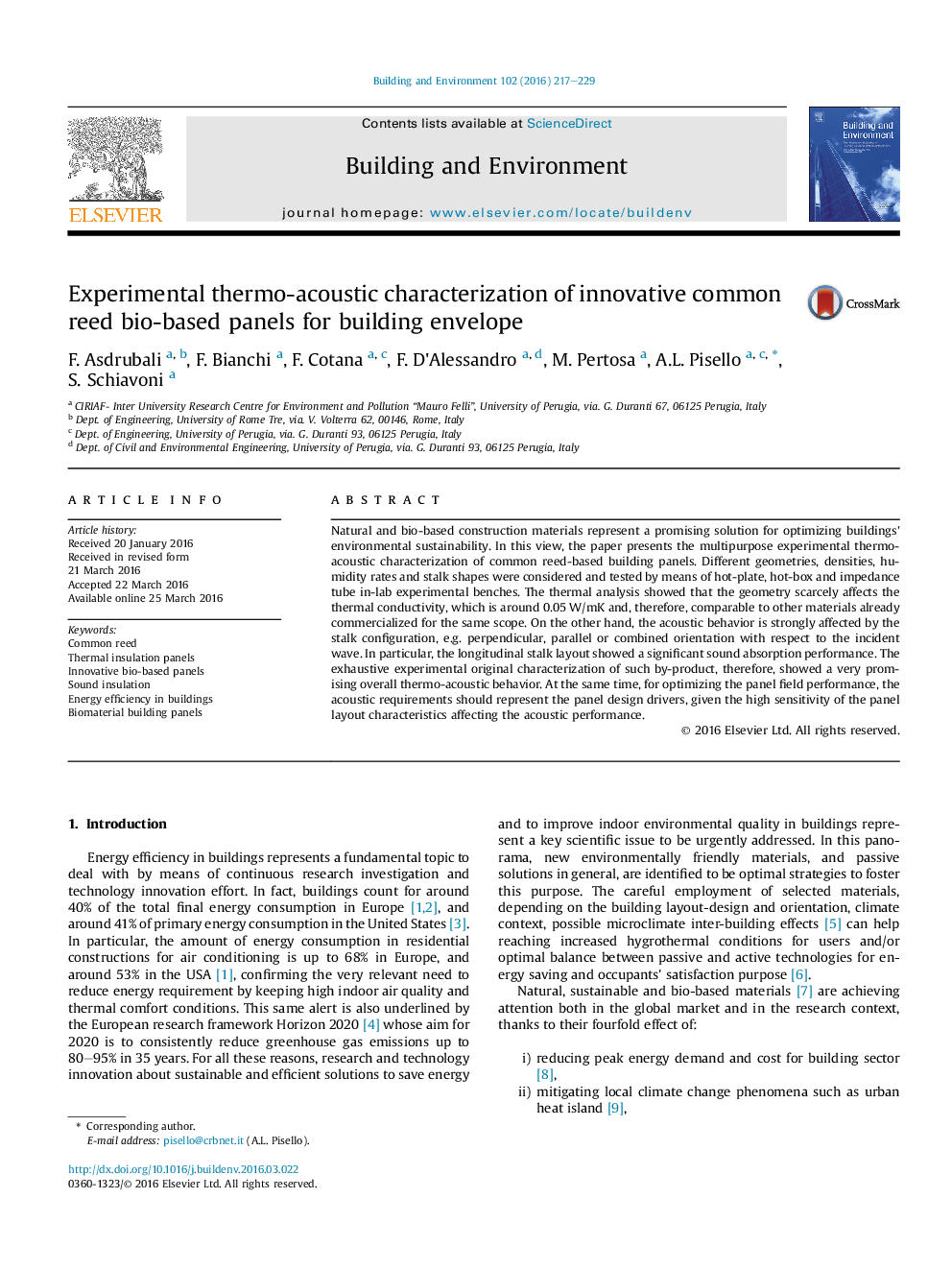| Article ID | Journal | Published Year | Pages | File Type |
|---|---|---|---|---|
| 6699320 | Building and Environment | 2016 | 13 Pages |
Abstract
Natural and bio-based construction materials represent a promising solution for optimizing buildings' environmental sustainability. In this view, the paper presents the multipurpose experimental thermo-acoustic characterization of common reed-based building panels. Different geometries, densities, humidity rates and stalk shapes were considered and tested by means of hot-plate, hot-box and impedance tube in-lab experimental benches. The thermal analysis showed that the geometry scarcely affects the thermal conductivity, which is around 0.05Â W/mK and, therefore, comparable to other materials already commercialized for the same scope. On the other hand, the acoustic behavior is strongly affected by the stalk configuration, e.g. perpendicular, parallel or combined orientation with respect to the incident wave. In particular, the longitudinal stalk layout showed a significant sound âabsorption performance. The exhaustive experimental original characterization of such by-product, therefore, showed a very promising overall thermo-acoustic behavior. At the same time, for optimizing the panel field performance, the acoustic requirements should represent the panel design drivers, given the high sensitivity of the panel layout characteristics affecting the acoustic performance.
Related Topics
Physical Sciences and Engineering
Energy
Renewable Energy, Sustainability and the Environment
Authors
F. Asdrubali, F. Bianchi, F. Cotana, F. D'Alessandro, M. Pertosa, A.L. Pisello, S. Schiavoni,
